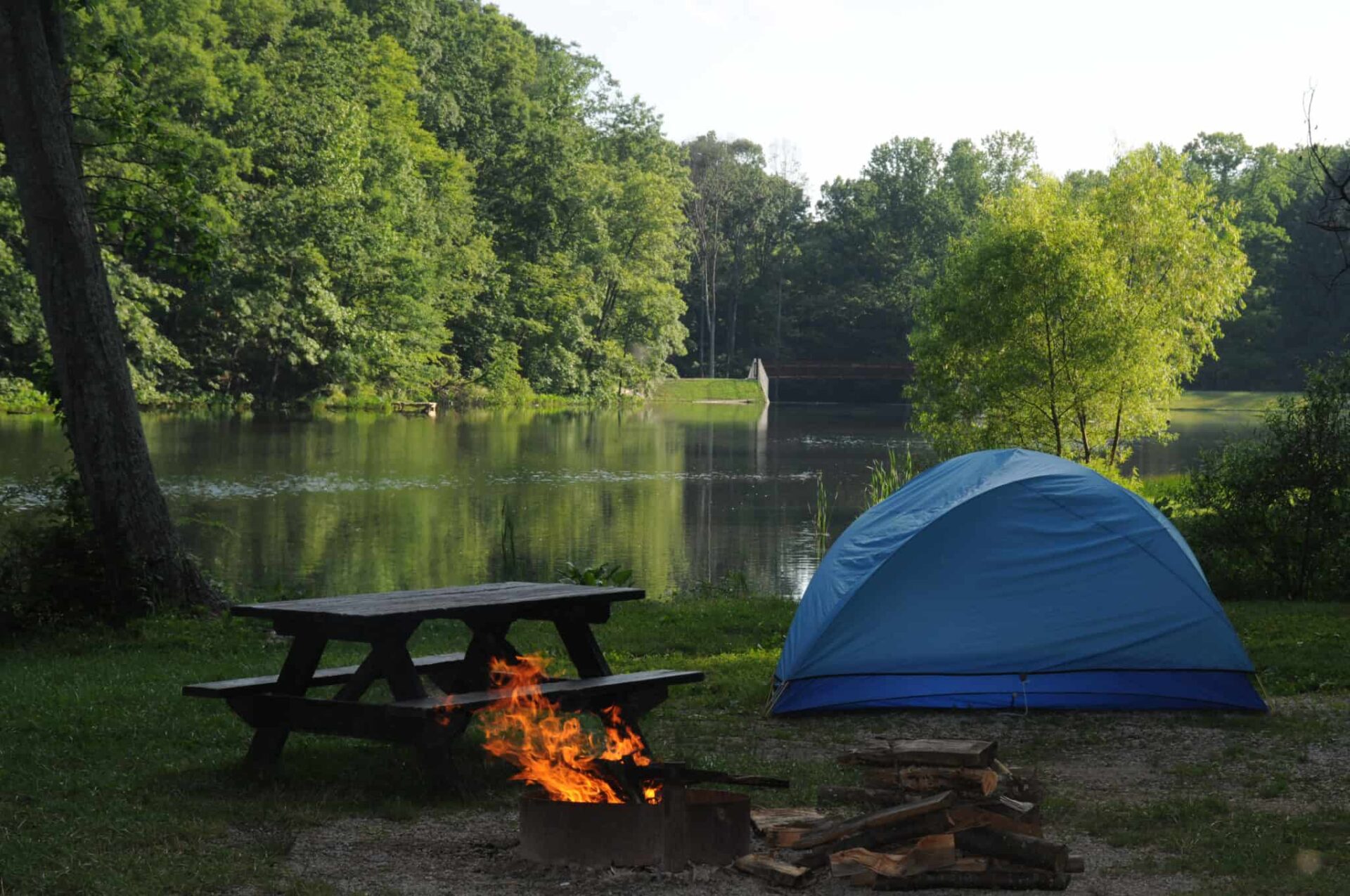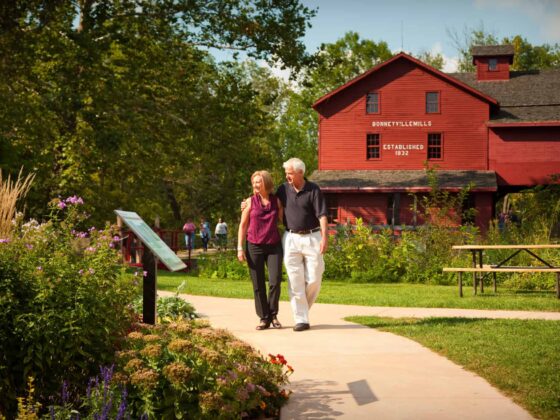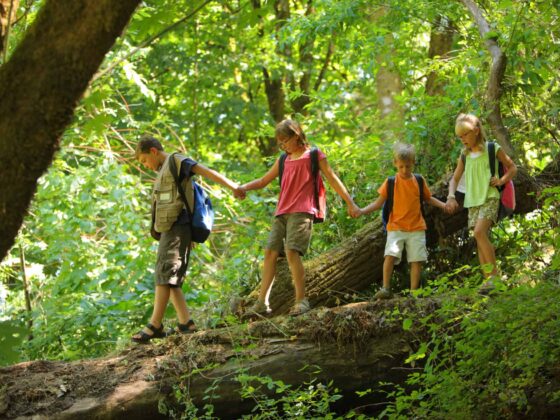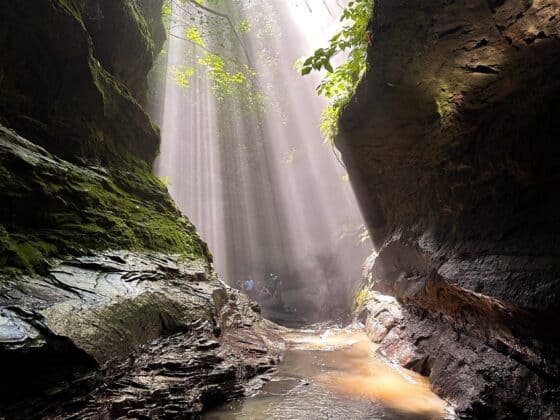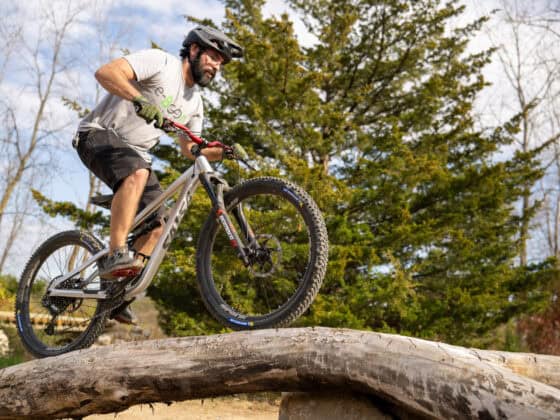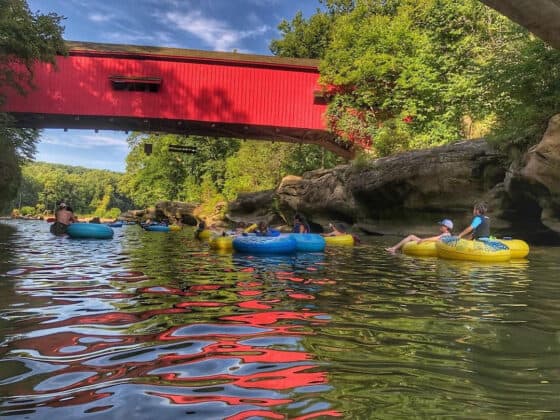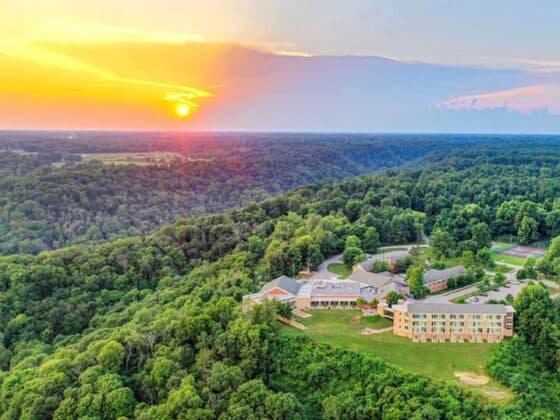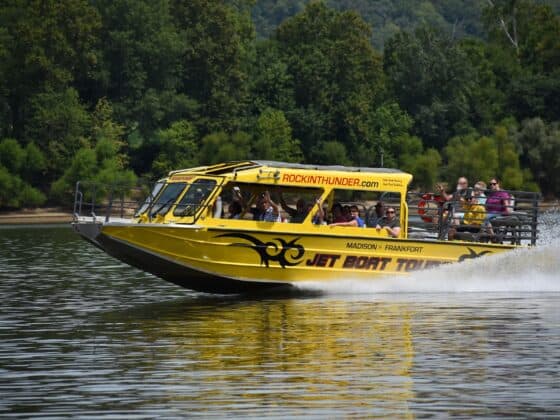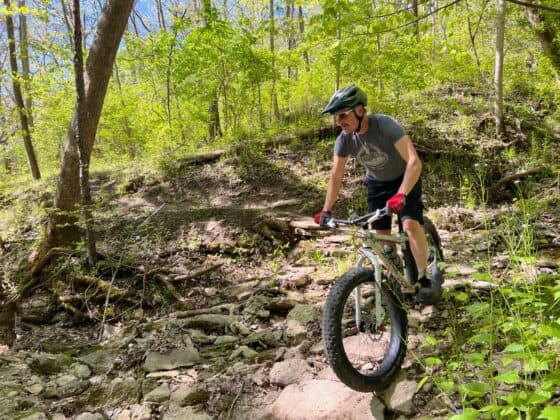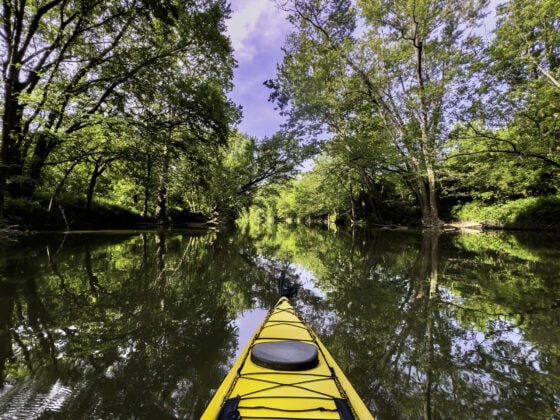By Nick Werner, DNR Staff
Indiana State Parks is making camping more convenient for people like Betsy and Chad Meyers.
The Meyers like to camp before the traditional outdoor recreation season begins and remain camping after it ends.
Almost as soon as the Pendleton couple stows their travel trailer in their barn for winter, they are anxious to camp again. When the first reasonably warm weekend in spring arrives, they are out the door, often destined for Brown County State Park.
“We are ready,” Betsy said. “We are always ready.”
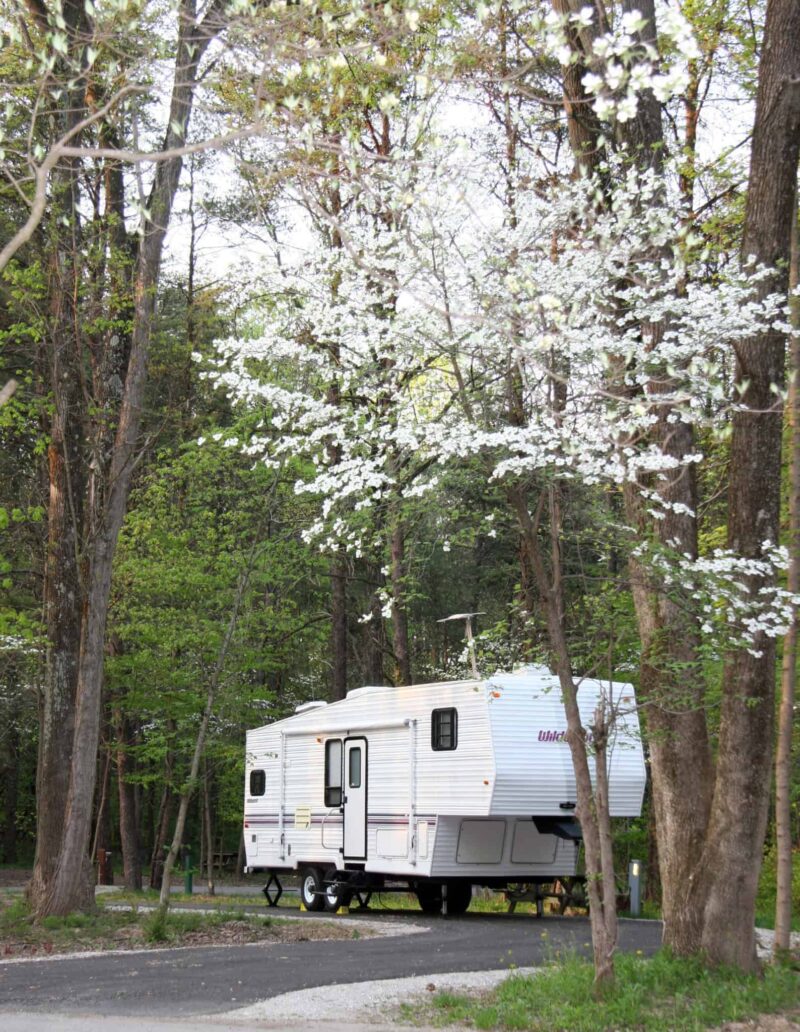
Now, campers like the Meyers can reserve campsites at Indiana State Parks in advance year- round, not just during the traditional outdoor recreation season.
Camping has always been available year-round at state parks. But in the past, campers could not reserve a site in advance between November
1 and early May. Sites were available only by registering on- site the day of camping, and they were administered on a first-come, first-served basis.
Now, a handful of sites at every state park where camping is offered will be available year-round for reservations on Camp.IN.gov or by calling 1-866-622-6746. For those who like to plan ahead, the ability to make year-round reservations is a user-friendly option.
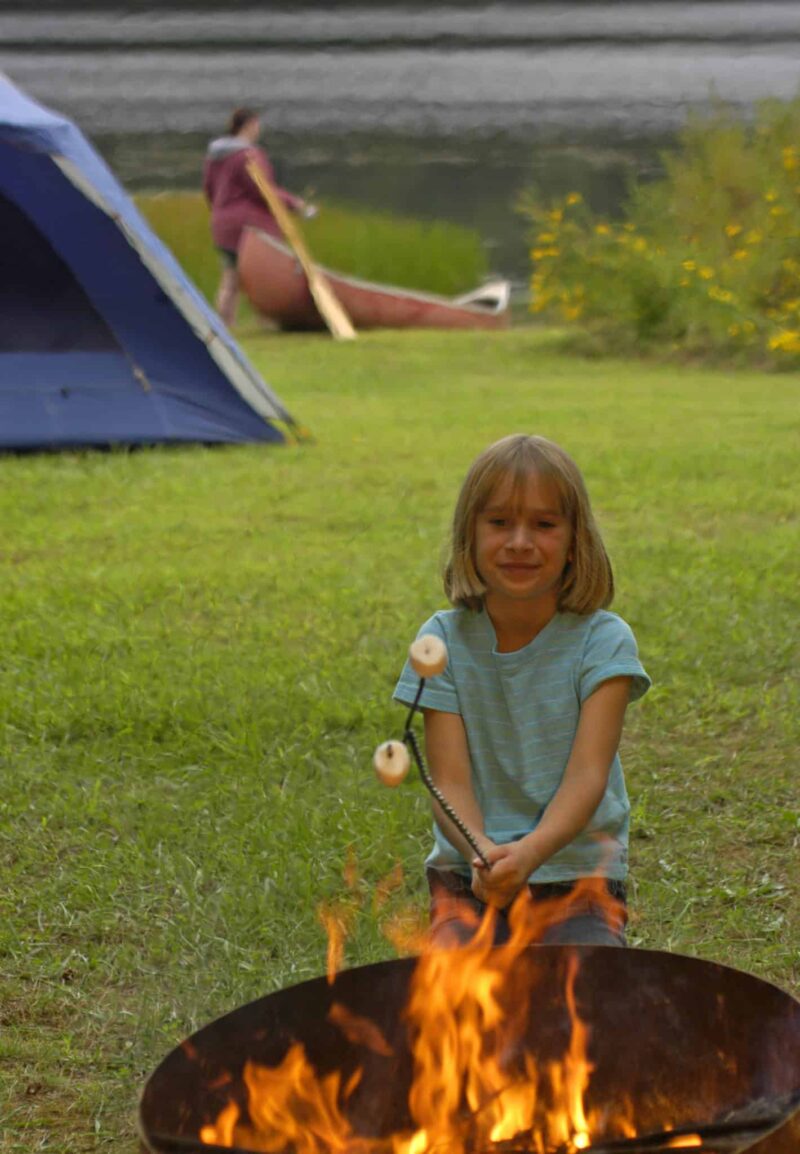
In 2017, the Meyers’s first camping weekend coincided with Betsy’s birthday in April. Getting an early start on camping satisfies the couple’s cold-weather restlessness and offers some significant advantages. “It’s completely different,” Betsy said. “It was quiet.”
April is part of the spring “shoulder season.” Shoulder seasons are the travel period between peak-season and off-season. They occur in late winter to spring and in late fall to early winter.
For Indiana State Parks, the early shoulder season runs from about the beginning of March to Memorial Day. The late shoulder season runs from about Halloween through early December. It is probably a little bit shorter. Peak season has extended further into the fall with harvest festivals and Halloween eventsincreasing in popularity.
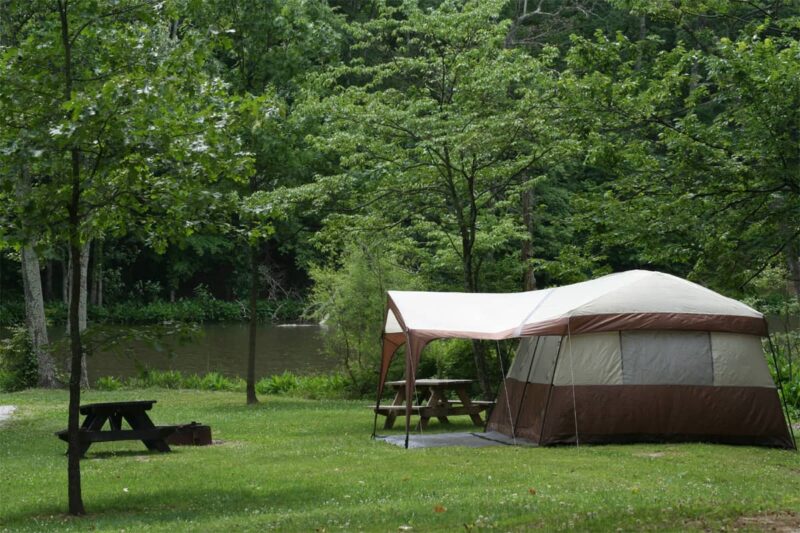
Beyond smaller crowds and enjoyable temperatures (usually), the benefits of planning a shoulder season day-trip or overnighter at an Indiana State Park are numerous.
-You won’t have to swat bugs, or lather yourself in spray.
-There’s less of a chance of encountering poison ivy.
-Crisp, clear nights make for cozy campfire experiences.
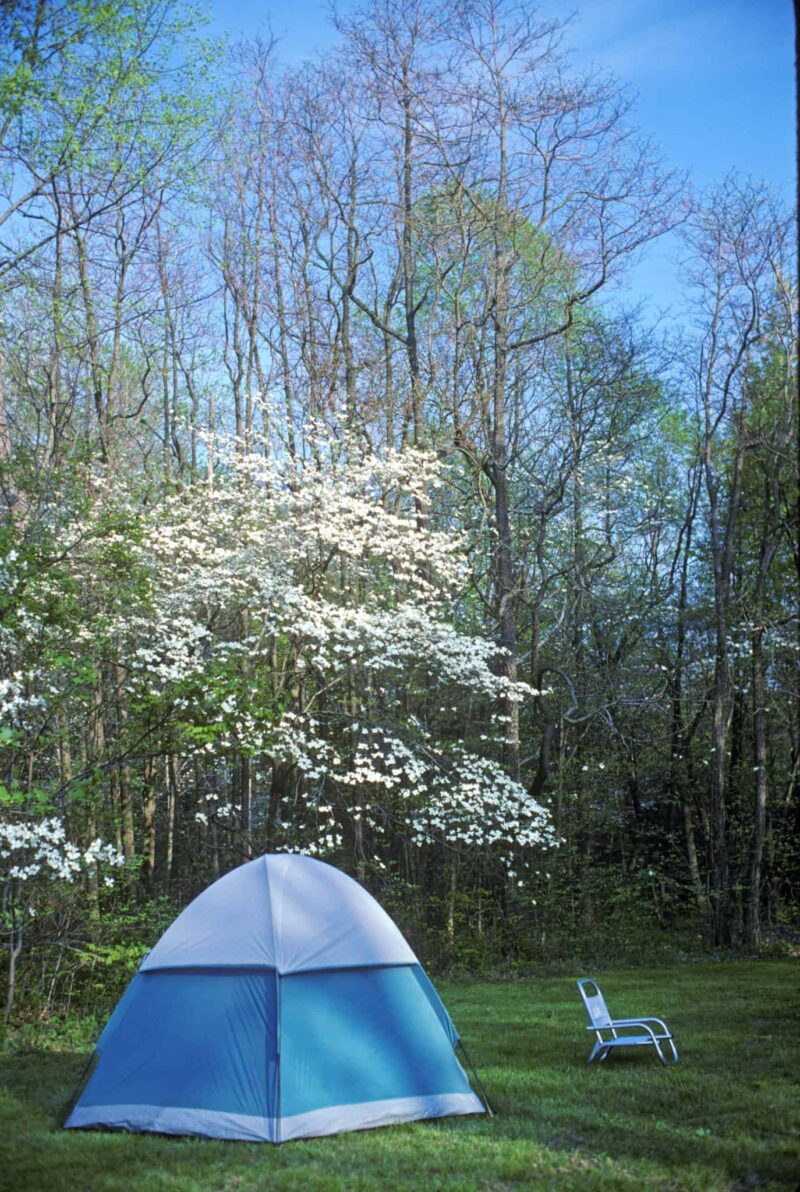 -Some park gatehouses are unattended during this period; you may not have to pay admission.
-Some park gatehouses are unattended during this period; you may not have to pay admission.
-Many state park campgrounds have heated restrooms and a year-round source of water for campers.
-High-demand campsites will be more available.
-The shoulder season coincides with many bird migrations, and natural areas are often loaded with feathered travelers from far-away places.
-Less vegetation in wooded areas can make spotting wildlife easier.
-For anglers, the fishing can be great.
The only real disadvantage is that weather can be more unpredictable. A late winter or an early winter can wipe out a shoulder season. Some shoulder seasons are plagued by precipitation.
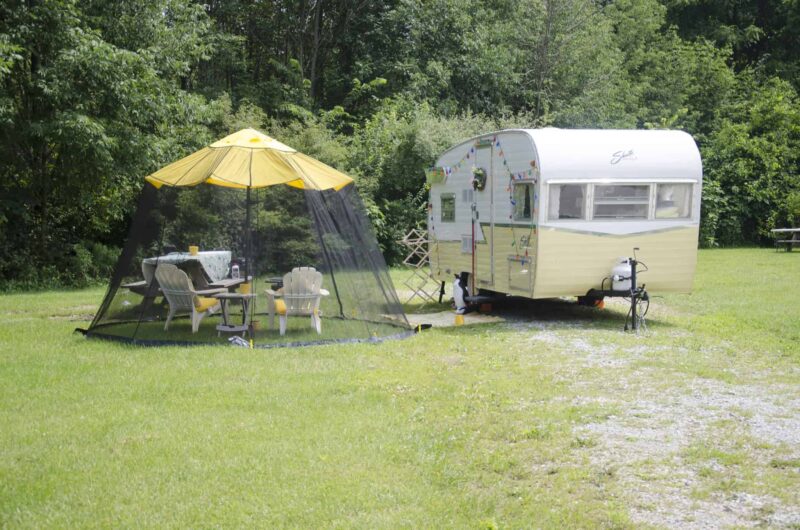
On the other hand, in some years spring arrives early or fall stays late, extending the shoulder season.
So, be flexible and keep an eye on the forecast. If you’re more of a warm-weather person, head for the hills. Southern Indiana can be downright balmy in early spring and late fall, offering a chance to hike trails in a T-shirt while northern Indiana is wrapped in sweaters. Check out properties like Harmonie, Lincoln, O’Bannon Woods, Falls of the Ohio, Charlestown, Clifty Falls, Versailles and Spring Mill state parks.
But, if you enjoy—or at least tolerate—cooler temperatures, then northern Indiana has a lot to offer, too.
With 23 miles of trails, Chain O’Lakes in Noble County is another northern state park worth visiting outside summer. The park is home to nine quiet kettle lakes separated by low hills that were deposited by glaciers. Hilltop trails offer great views of the lakes. And those views are perhaps best when unobstructed by understory foliage.
Year-round outdoorswoman Jules Erwin of Bloomington has advice for anyone hesitant to get out in cooler weather.
“Don’t be afraid of it,” she said. “Wear extra layers. Take along an extra pair of dry socks.”
Indiana State Parks can’t promise perfect weather on your next camping trip. But its new year-round reservation system can help eliminate at least some worry from the planning process. With a reservation, you’ll know for certain you have a place to stay.
The maximum booking window of six months prior to arrival still applies.
And, for more spontaneous campers, many sites will remain available from November through April on a first- come, first-served basis for the day of arrival.
Some services will be limited in the winter, and water is typically turned off from November through mid-March or April.
If you camp in the spring, you may want to check with the property ahead of time about the availability of modern restrooms and showers since the threat of freezing weather can be unpredictable.
Hopefully, you are convinced to visit a state park this spring. And if you are, take a cue from the Meyers.
Watch for good weather and be ready. Always be ready.
IT COMES TO SPRING CAMPING, FAILING TO PLAN IS A PLAN TO FAIL. ALWAYS:
- Check the forecast.
- Make sure someone knows where you will be camping and when you will return.
- Bring more food, water, clothes and rewood than you think you’ll need.
- Make sure sleeping bags are rated for the conditions you will be in.
- Layer your clothing, beginning with a wicking (or perspiration-removing) layer, followed by insulating garments, topped off by a wind and/or waterproof shell.
- Drink plenty of water.
- Prepare warm, hearty meals.
CAMPING IS AVAILABLE YEAR-ROUND AT INDIANA STATE PARKS.
Some campground loops may be closed from November 1 through April. Check with the property o ce when planning your visit.
-Primitive camping sites are available year-round at all state park campgrounds.
-Electricity is generally available year-round in most modern campgrounds. Water may not be available between November and April. Prepare accordingly.
-Several campgrounds offer heated comfort stations and/or a frost-free water source through all or part of winter. For a list, visit stateparks.IN.gov/9655.htm.
-Cabins are a good place to start for those inexperienced at braving the cold. Some cabins are open all winter.


